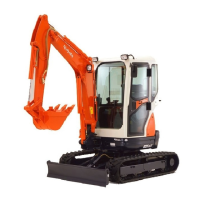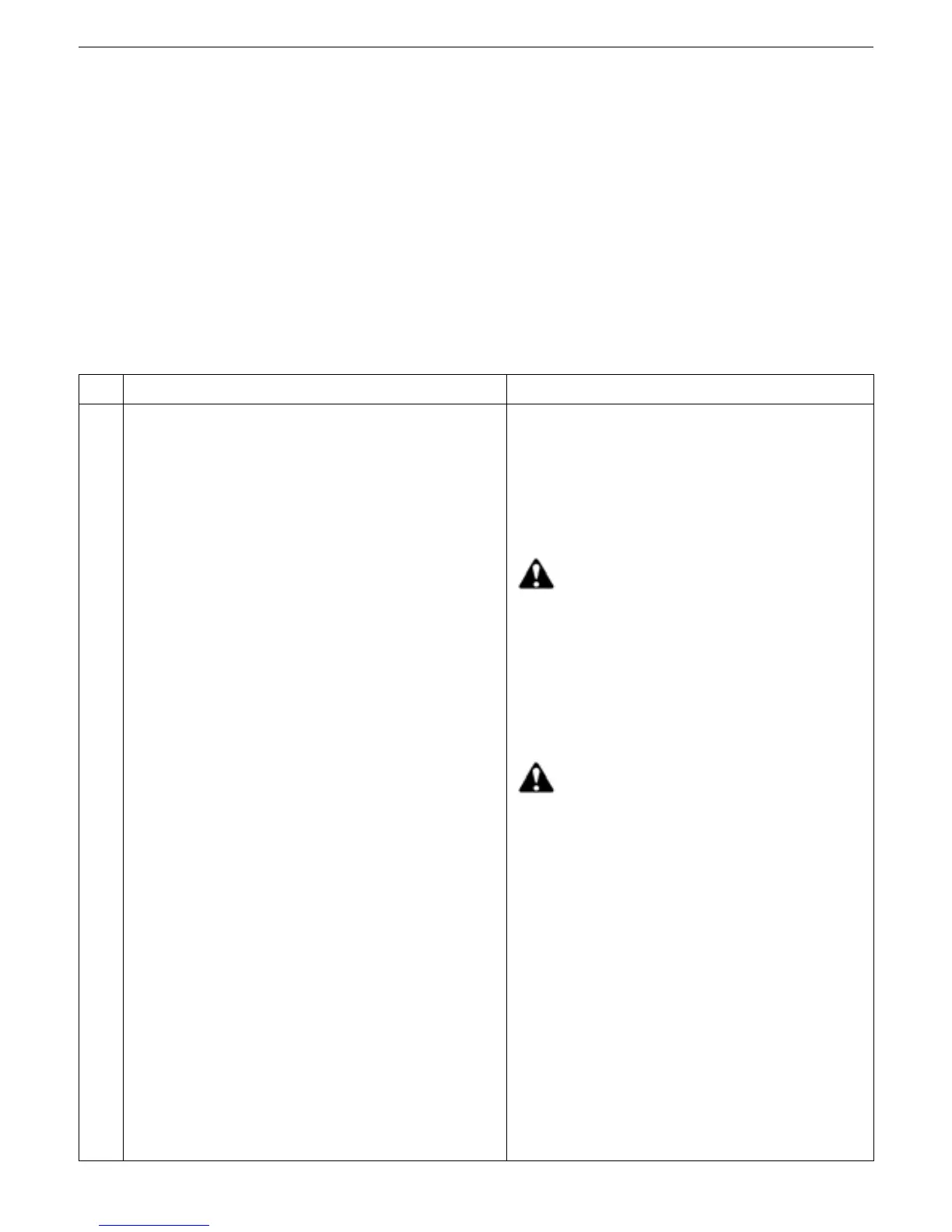U20-3, U25-3 WSM Hydraulic system (Service section)
IV-S-67
3) Disassembling
1. Preparations
(1) Prepare a workbench that is spacious enough for the parts handled and strong and stable
enough to keep the parts in place.
(2) Also have the tools and jigs, discussed in Item 7-1, at hand.
2. General precautions
(1) The parts are precision-machined. Handle them with enough care not to hit them against each
other or drop them.
(2) Even if any part is hard to remove, do not strike it out or pry out forcibly. Such handling may
cause burrs or damages, which may invite oil leak or poor performance later. Try to do the job
with patience.
(3) Do not leave the taken-out or exposed parts unprotected. Moisture or dust may get stuck on
them, causing rust. If unavoidably the job is interrupted halfway, be careful to protect such
parts against rust and dust.
3. Disassembling procedure
Procedure Precautions
1 Clean up the pilot valve with kerosene. * Apply blind plugs to all the open ports.
2 Fix the pilot valve on a vise using copper (or lead) sheets.
3 Remove the bellows (501). [Photo 7-1] * Be careful not to break the bellows (501).
4 Apply a wrench across the adjusting nut (312) and disc
(302). Loosen and remove the adjusting nut and disc.
[Photos 7-2, 7-3 and 7-4]
5 With the specified jig, turn the joint (301) counterclockwise
to get it loose. [Photos 7-5 and 7-6]
* Photo 7-5 shows the jig in its specified position.
CAUTION:
* When the return spring (221) is strong in force, take
care in loosening and drawing out the joint (301). The
plate (151), plug (211) and push rod (212) may pop
out together when taking out the joint.
6 Remove the plate (151).
(When the return spring (221) is strong in force) [Photo 7-7]
(When the return spring (221) is weak in force) [Photo 7-8]
7 When the return spring (221) is weak in force, the sliding
resistance of the O-ring holds the plug (211) inside the
casing (101). Using a bladed screwdriver, draw out the
plug. [Photo 7-9]
* Using its outer groove, draw out the plug (211) with
care not to get it damaged by an unbalanced load.
CAUTION:
* Keep in mind that when the plug (211) may pop out by
the force of the return spring (221).
8 Pull the push rod (212), plug (211), reducing valve
assembly, and return spring (221) out of the casing (101).
[Photo 7-10]
* Keep record of the positional relation with the casing
hole.
9 Fix the pilot valve, with its port plate (111) upward, in the
vise.
10 Using the specified hex wrench, loosen and remove the
hex socket bolt (125). [Photo 7-11]
11 Detach the port plate (111) and O-ring (122) from the
casing (101). [Photos 7-12 and 7-13]
Draw the bushing (131) out of the casing (101).
12 To disassemble the reducing valve, do the following.
Press in the spring seat (216) to get the secondary-
pressure spring (241) warped. Then slide this spring seat
sideways and pass it through the larger hole and out of the
spool (201). [Photo 7-14]
Next separate the following parts: spool (201), spring seat
(216), secondary-pressure spring (241) and washer 2
(217). [Photo 7-15]
* Be careful not to scratch the surface of the spool
(201).
* Do not allow the spring seat (216) 6 mm or lower than
specified.
* Handle this group of parts as an assembly.

